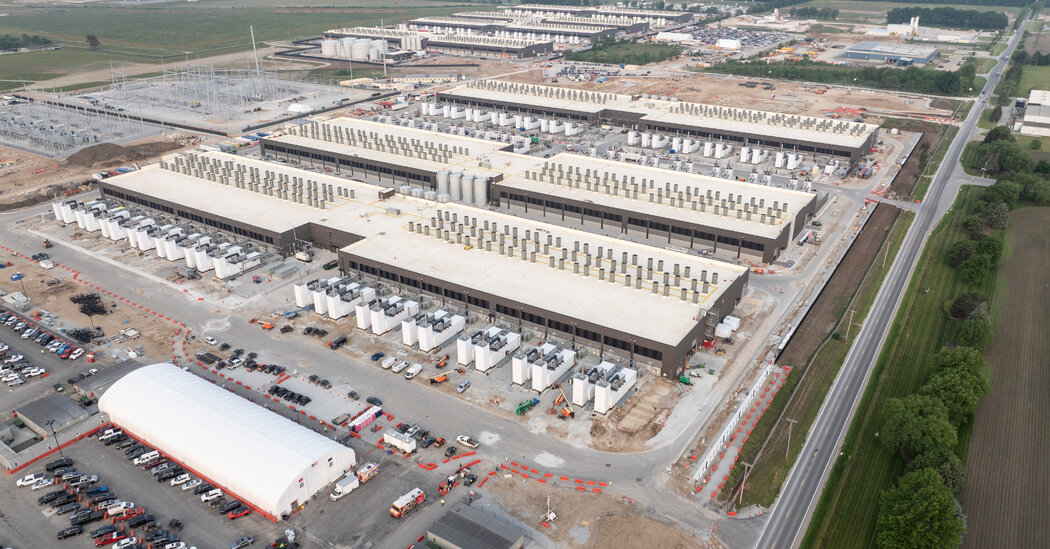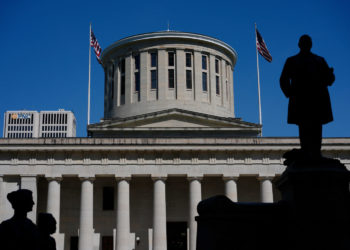Amazon reported unexpectedly strong sales and profit on Thursday across both its consumer and its cloud businesses, and said another robust quarter might be ahead.
The company’s sales totaled $180.2 billion from July through September, up 13 percent from a year earlier. Profit was $21.2 billion, up 38 percent. The overall results were buoyed by the enduring strength of consumer spending online, despite tariffs and an uneven economy, and by a resurgence in cloud computing.
“We continue to see strong momentum and growth across Amazon as A.I. drives meaningful improvements in every corner of our business,” Andy Jassy, the chief executive, said in a statement. He added that the company’s cloud services business had grown at its fastest pace since 2022.
The strong quarter, which beat analysts’ expectations, sent Amazon’s stock soaring more than 10 percent in after-hours trading.
Amazon had previously warned investors to brace for an uncertain quarter, particularly regarding how much its costs might grow.
More than anything, investors have been nervous about Amazon’s cloud computing division, which has long been its primary source of profits. Amazon invented the business of cloud computing and was long the dominant player. But in 2022, ChatGPT was introduced by OpenAI, which built and operated the artificial intelligence chatbot on Microsoft’s services, and Amazon was widely viewed as being caught flat-footed. Google, Microsoft and Meta raced to find ways to develop and use A.I. systems.
Amazon has made large investments, too, but after years of hovering around a third of the cloud computing market, its share slipped to 30 percent in the first half of this year, according to Synergy Research Group.
Amazon “has done remarkably well” given how competitors have aggressively pursued its lead, said John Dinsdale, the research director at Synergy.
Many investors were eyeing whether Amazon could stop or even reverse that trend.
On Thursday, Amazon reported that the growth of its cloud division had picked up speed, with sales of $33 billion, up 20 percent from a year earlier. While still slower than its peers, it offered a brighter outlook.
Amazon spent more than $34 billion on capital expenditures in the quarter, in large part to set up data centers that power cloud computing and A.I. That sets it well on the path to meet investor expectations that capital expenditures will top $120 billion for the year.
Despite all the building, the company has not had enough data centers up and operating to meet customer demand, depressing sales.
Analysts at Morgan Stanley recently wrote that Amazon needed to quickly get more data center capacity online to no longer be considered a “loser” in the era of generative A.I.
Amazon attributed $9.5 billion in profit to the value of its investment in the A.I. start-up Anthropic, which has become a flagship customer of its cloud computing.
Amazon’s retail business has generally weathered the frequent whiplash of President Trump’s tariffs better than investors initially feared. The company and the sellers on its marketplace stocked up on inventory in the United States before the new duties, a move that Amazon said had provided some insulation against them.
The number of items that Amazon sold in the quarter grew 11 percent, a sign that consumers were not pulling back drastically. Its advertising business, which largely promotes products to customers on its site, remained strong, with $17.7 billion in sales.
The company has been aggressively looking to do more with less. This week it announced that it was laying off 14,000 corporate employees. And The New York Times reported last week that Amazon’s automation team had ambitious goals to use robotics to avoid hiring more than half a million workers by 2033.
The company had 1.58 million employees, up slightly from a year earlier.
Karen Weise writes about technology for The Times and is based in Seattle. Her coverage focuses on Amazon and Microsoft, two of the most powerful companies in America.
The post Amazon’s Profit Is Up 38% on Strong Performance appeared first on New York Times.




